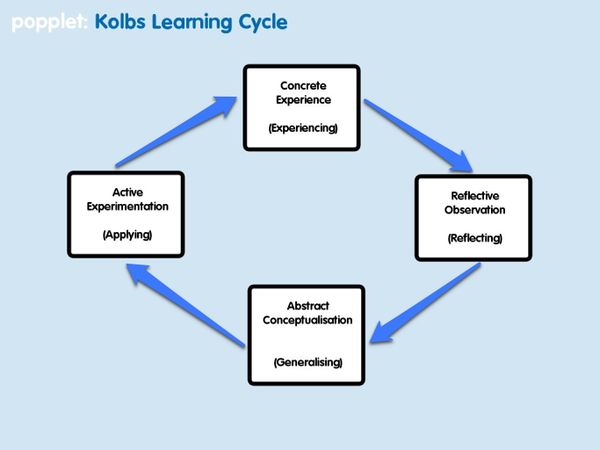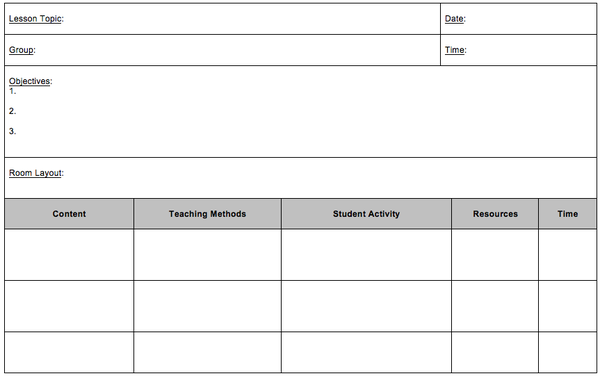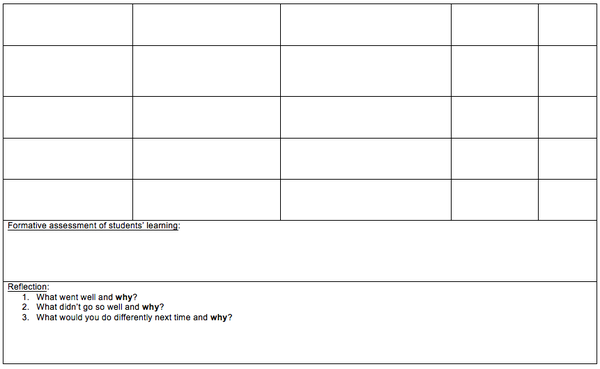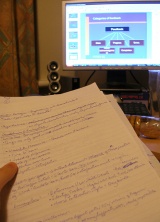GDTE Development/Facilitating a learning session
GDTE microcourse: Facilitating a learning session
Learning outcome:
At the successful complete of this course, students will be able to:
transfer adult learning and teaching principles into a specific subject/work context, by planning, delivering and critiquing a session/learning sequence (covering a specific topic).
Assessment
Demonstrate, using examples from practice, how you:
- apply adult learning and teaching principles into your specific subject/work context through the planning, facilitation and critque of a specific learning session.
In compiling your evidence to demonstrate the learning outcome identified above include a narrative that:
- explores what you have learned and the relevance of this to your work
- includes discussion of how your new learning has impacted on your practice and influenced future actions you may take
- is supported with educational literature and other forms of information
- is supported with your choice of evidence, that is authentic, current, sufficient and relevant
Evidence must include:
- outcomes of all the e-activities
- micro-blog and discussion forum contributions - to be confirmed
- any additional evidence that supports your learning
Example of marking schedule
Contents
- 1 Opening Page blurb
- 2 Planning
- 3 Facilitating learning
- 4 Reflection and Evaluation
Opening Page blurb
Name of Course
Facilitating a learning session
Summary Sentence
Learn about planning, delivering and critiquing a session/learning sequence through application to a specific subject or context.
What’s it about?
Global education trends now focus on outputs and learning achieved rather than inputs and the acquisition of content. To enable gains in student achievement and learning it is important to carefully plan how learning experiences will be provided and facilitated. It is also important to reflect on what has occurred to further improve future experiences. This course encourages you to consider a learner-centred approach to the planning and facilitating of a learning session and supports the development of reflective skills to enable you to sustain positive learning experiences for students.
What will I learn?
This course is designed for educators who want to create positive learning experiences through learning how to plan and deliver a learning session. This course will help you to:
- learn about available tools and processes for planning learning sessions
- consider various approaches and activities for session facilitation
- review ways of critiquing a learning session and identify key focus areas to reflect on
- use your learning in your facilitation of learning sessions
What’s involved?
You will participate in an open international online course for 4 weeks. You will need to allocate up to 10 hours per week for the duration of the course including time spent on assessment activities. The course is divided into 3 sessions inclusive of suggested learning activities:
- observing others facilitation of learning sessions and planning for your own
- Exploring a range of learning activities and facilitating a learning session
- Reflecting on the facilitated learning session and considering how to be use multiple sources of feedback to inform future planning
Self directed study to complete the assessments for this course is included in the time allowance identified above for learners aiming for the Certificate of Achievement and/or credit towards the GDTE Teaching and Learning in Practice Course.
Prerequisites?
Anyone is free to participate in this course. An internet connection and basic web browsing skills are recommended with the ability to create a blog and microblog account (instructions and self-study tutorials provided.)
Learners aiming to submit assessments for formal academic credit will need to meet the normal university admission requirements of the conferring institution (eg language proficiency and school leaving certificates).
Planning
Observe others teaching session & creating own plan for a session
possible pathway
- what and how to learn from observing others facilitating sessions
- importance of need to plan for learning
- tools to use to assist/support planning
- creation of own session plan
Objectives
|
|
Video signpost
Alterio 17.01 to 20.38
Introduction
This session looks at planning by focusing on two key stages:
- Observing how others teach. This will help us to identify the sorts of things that need to be included in a teaching plan. It will also lead into the following sessions.
- Writing an effective teaching plan. A teaching plan is a key tool for effective teaching and learning.
In this resource, we will use a simple scenario to illustrate key points:
|
Introducing Emilia Emilia teaches several courses as part of her institution's Bachelor of Nursing. She is recognised by her department and institution as a very successful teacher. She achieves good results, and students enjoy and are motivated in her classes. Because of this, she is often called on to provide expert advice and support to other teachers, especially those new to the job. |
Observing a teaching session
What is the purpose of teaching observation?
Note that throughout this micro-course we are focused on teaching observation as professional development, not as performance appraisal.
Observing other teachers is founded in the concept that effective professional development cannot happen just through 'book learning': it requires a component of experiential learning.
Observation is an important part of learning how to teach ... classroom observation presents an opportunity to see real-life teachers in real-life teaching situations. Source: Olenka Bilash
The experiential learning approach incorporates not just direct experience: to be effective, the experience needs to be part of cycle including reflecting on the experience and applying what has been learned:
See if you can identify how Emilia uses aspects of the experiential learning cycle in supporting new teachers in her department:
|
How Emilia uses observation of teaching In providing support to new teachers, Emilia ensures that early on they get the opportunity to observe one or more teaching sessions - maybe her own teaching, maybe that of another experienced teacher in her department. Before the observation, we talk through what the new teacher might look for during the session. Then, after the observation, we have a chat about what they observed and how this might be useful to their own teaching. I give them an observation guide as to the sorts of thing to look for. They keep a few brief notes during the session - this helps them keep focused during the observation, and we refer to it in our discussion afterwards. They always find the process very helpful - interestingly, they learn as much by seeing things that didn't go well or could be improved as by seeing great teaching! |
Check out Bilash's The Value of Observation. Although a few details relate specifically to language classrooms, the general principles are applicable to teaching in any subject.
What makes observation effective?
Observation should be focused on the learning process, not the content taught. In other words, when observing a teaching session we should look for:
- How does learning take place? What learning activities do the learners in? How do they interact with the content and with others? What resources or tools are used in the process?
- What teaching activities support these learning activities? How does the teacher guide, motivate, engage, and support learners?
Watch the video on Effective Group Work in College Science Classrooms: Part 1. (Although it is focused on group work, it does include valuable footage of three learning activities in a classroom.)
|
Please use the hashtag #FLS1 for this activity.
|
As Bilash points out, It may be threatening to be subject to peer observation, so observation needs to be done in a considerate and respectful fashion. As an observer, you will need to:
- Have the full support of the observed teacher to carry out the observation. Agree on what the observation is for (your own professional development, not to give them feedback about how well they teach!) and details such as the time, date and venue. Agree on the guidelines or checklist you will use (see below).
- Be unobtrusive and respectful to learners during the observation. We suggest you don't attempt to video or photograph the learning process. Make sure that learners are advised that you are present for the sake of your own learning, not to assess them or appraise the teacher.
- Respect the privacy of all concerned: do not record the names of the teacher or learners.
In addition, observation is most effective when clear guidelines are put in place: usually the observer and the teacher being observed agree on a checklist of things that the observer will look for during the session.
This Teaching observation guide![]() is quite open-ended and is based on Chickering and Gamson's Seven Principles for Good Practice in Undergraduate Education:
is quite open-ended and is based on Chickering and Gamson's Seven Principles for Good Practice in Undergraduate Education:
|
Planning a teaching session
Why is planning important?
- A well structured lesson increases students' motivation and interest.
- Planning your lesson ensures the content will be in tune with the required learning of the course.
- Planning also helps to filter your content and prompts you to discard what isn't relevant.
In a traditional lecture, the only planning you really need is a list of content! |
What should we include in a plan?
There are many ways to record teaching plans. While quite brief or informal methods have their place, they often do not provide enough detail. A useful written plan needs to include enough information so that:
- Another teacher could facilitate the session, incorporating the same learning activities, if you were unavailable.
- You could facilitate the same session a year or more in the future without having to redesign it.
- You can review and reflect on the session yourself later on - what worked well and what didn't.
We foster a reflective process for teachers as part of their ongoing professional development. |
Emilia's planning template
This is the template Emilia suggests teachers use. Note the column set aside for the learner activity:
Page 2 includes space for details of the formative assessment as well as focus questions for your own reflection after the session:
Because the assessment for this micro-course requires evidence of planning and reflection, you will need to use a reasonably detailed planning format. We recommend you download and use Emilia's template as a useful model. ***NEED TO RESOLVE WAY TO DISTRIBUTE A WP DOCUMENT HERE***
(If you find this lesson plan format useful, you can download a template in MS Word format from within the Moodle course: http://moodle.op.ac.nz/mod/resource/view.php?id=169854)
If our plan is sufficient, another Physiology teacher should be able to teach the same session based on what's in the lesson plan. Could you?
|
Linking learning activities to models and theories
|
Please use the hashtag #FLS3 for this activity. Consider the learning activities in Alterio's description:
|
Note: In the assessment for this micro-course, it is essential that you incorporate a range of strategies (including active, experiential and deep learning) into your planning and facilitation. Please make sure you are clear about this requirement before going on to the assessment of this session!
The planning process
In any good design, a planning process must first be followed. Ako Aotearoa has developed a useful guide to the process you might find helpful:
Click on the expand button ![]() to the right of each stage of the process for more information:
to the right of each stage of the process for more information:
| 1. Establish the learning objectives |
|---|
| Learning objectives are what you want your students to learn (that is, to know or be able to do) as a result of the session.
Here are some sample learning objectives from another course on WikiEducator.
(Source: Applying Effective Communication Skills) How are learning objectives different from learning outcomes?
Please note: sometimes these terms are used interchangeably or differently from our definitions here! Learning outcomes and objectives are usually written in a standardised format: for more information on how to write learning outcomes and objectives, see Writing Learning Outcomes and Learning outcomes and learning objectives. |
| 2. Decide on the content | |
|---|---|
| Ensure the content will enable the learning outcomes to be achieved.
Also, make sure that the content for the lesson fits with what you taught yesterday and what you will teach tomorrow.
|
| 3. Decide how you will deliver the content | |
|---|---|
| Ensure the content is learner focused and that there are a range of learning activities that will suit your students and their learning styles.
Explore the following links to examples of learning activities:
|
| 4. Decide on the order in which you will teach the content |
|---|
Make sure you include an interesting introduction, a logical and well-sequenced main body which includes the key messages, and some way of summarising or drawing the lesson to a conclusion. (Students remember what they heard first and last!)
|
| 5. Decide on resources | |
|---|---|
| Decide what learning resources you need to prepare for your session, both to support your teaching and to give to your students to support their learning.
|
| 6. Think about timing |
|---|
| Break your lesson into manageable learning chunks and estimate how much time to allocate to each.
|
| 7. Formative assessment | |
|---|---|
| Decide how you will know that your students have achieved your objectives for the session - that is, they have understood or learned what you intended.
What activities or questions can you ask your students or get them to complete which will enable you to identify that they have understood the content of the lesson?
|
| 8. Review |
|---|
| What will you get your students to do before the next lesson? What resources can you provide for those students who need additional support? What extension activities can you prepare for those students who want to deepen their learning? |
Acknowledgement: sections of this topic have been based on Ako Aotearoa's Signposts publication (CC-BY-SA).
E-Activity
This activity is part of the summative assessment for the course.
|
Please include the hash tag #FLS4 for this assessment.
Notes:
|
Facilitating learning
Undertaking a teaching session and being observed, use 'simple' tool to gather student feedback
possible pathway
- exploring facilitation methods / active learning approaches
- structuring the flow of a learning session around active learning
- having own teaching observed
Video signpost
Woodhouse 16.08 18.26
Introduction
In this session you will facilitate the lesson you planned in the previous session, incorporating useful feedback from others. For assessment purposes, you will need to have the teaching session observed by a colleague.
Preparation
Teaching session plan
- Review the feedback you have received from your peers and the facilitator of this micro-course and consider how you might improve the plan. In particular:
- Are the learning objectives realistic and relevant?
- Is there a sufficient level of active, experiential and deep learning?
- Are the time allocations for each learning activity appropriate?
- Make any changes needed to enhance the planned session and lead to a more successful learning process.
Feedback from learners
To inform your own reflection on the teaching session, you should also at this stage consider how you will get feedback from learners. This could be gathered through questioning, but an anonymous written evaluation is often much more reliable. See Evaluation methods for ideas on how to gather feedback form learners. Since you are just looking for feedback on the effectiveness of a single session rather than a full evaluation of a course, the section on Informal methods might be the most helpful.
|
|
Resourcing
- Make sure the classroom is booked and that you will have access to the class. If this is a course you normally teach, this should be straightforward.
- Prepare any learning resources needed to ensure the teaching session is successful. These might include:
- Worksheets and handouts.
- Online access and logins to any computer system to be used.
- Special equipment for practical activities.
- Smartboard, data projector or other classroom equipment.
- Feedback sheets (so you can gather feedback from learners)
Remember the Physiology action methods class described in the previous session? It was clearly heavily reliant on the 'body parts' cards that were used throughout the session. The success of such experiential learning activities is often closely related to the quality of the learning resources used to to support them.
Observation
In the previous session, you observed someone else teaching. In this session, you will need to be observed by another teacher and get their feedback on your teaching session.
Note: the purpose of the observation is to provide data for your own evaluation of the teaching session. So it's essential that the observer provides an in-depth constructive critique of the session.
Who will do the observation?
The observer could be:
- One of your colleagues. If so, make sure you choose an experienced teacher rather than someone new to the role.
- A staff developer from your institution or department.
Whoever you choose, it's essential that they are able to observe and give feedback which is objective and informed by their own in-depth knowledge of adult teaching and learning.
In the next session, you will reflect on your own teaching. It is vital that this is informed by feedback from learners as well as from an expert observer. Without such feedback, you will find it difficult to do the in-depth reflection that is needed.
Please contact the facilitator of this course if you need help to find a suitable observer.
How will the observer give feedback?
The observer will need to document their observation using an appropriate observation sheet. We recommend you use Otago Polytechnic's Teaching observation template. Your institution or department may have a similar template that you prefer to use.
Please contact the facilitator of this course if you are unsure which observation feedback template to use.
E-Activity
|
Please use the hashtag #FLS5 for this activity.
|
Facilitate the session
- Carry out the observed teaching session as planned. Make sure you gather feedback from learners at the end of the session.
- Straight after the session, record some brief reflections of your own on what went well and what didn't go so well.
- Meet with the observer soon after the session to discuss their written feedback. When receiving feedback, we recommend:
- Focus on listening to the feedback as it is given. Avoid trying to explain or justify what went on in the session as this will distract you from fully understanding the feedback given.
- Ask for clarification if there is anything in the written or spoken feedback that you are unsure of.
- You may not agree with everything that is said - don't argue the point, just accept what is said as useful feedback for now.
- Finish by thanking them for the time and effort they have given.
Reflection and Evaluation
Reflect and critique on the session delivered, consideration of feedback from all sources
possible pathway
- what is self evaluation
- hearing and responding to feedback
- own reflections
- action planned from reflection
Video signpost
Barton 16.27 17.29
Introduction
In this final session you will reflect on your own experience and the feedback from others to evaluate the teaching session you facilitated in the previous session.
Models and theories
What is reflection?
According to Kolb's cycle, reflection is the stage of the reflective process which follows action or experience:
Following this reflection, the reflective practitioner moves on to further planning and action by applying what has been learned during the reflection phase.
Reflection is deliberate and mindful thinking about one’s experiences and the self-evaluation of feelings, decisions, understandings and actions.
Reflective practice is a process associated with professional learning, which includes effective reflection and the development of metacognition, and leads to decisions for action, learning, achievement of goals and changes to immediate and future practice. Source: A Framework to guide professional learning and reflective practice by Hegarty, 2011
|
Hegarty's definition of reflective practice is very much in line with what we do in our department. As well as the teaching observations, a big part of my role is to act as a mentor to help our teachers to reflect on their own teaching practice. It's a key part of our teachers' professional development, and it incorporates not just looking back (reflection on experience) but also looking forward - how we make well-considered changes to what we do. |
|
|
What is evaluation?
The term evaluation is often used for the formal process by which courses and/ or their delivery are reviewed by the institution as part of the ongoing quality assurance process.
The term may also refer to less formal reviews or critiques of classroom practices - this is often called formative evaluation since (like formative assessment) its purpose is improvement rather than providing an official 'seal of approval'.
The term self-evaluation is used for situations where we review or critique our own practice: this may be for the purpose of improving practice,or as part of a wider formal process of quality assurance.
In the previous session you received feedback on your teaching session from two main sources:
- Learners - you gathered feedback from them at the end of the session
- An observer - who gave written and spoken feedback based on their observation
Gathering feedback from others is a key early stage of all evaluation, including self-evaluation. And evaluation can be seen as not just looking back (reviewing what has happened) but also as looking forward - how can we improve what we do?
In its broad sense, then, evaluation can be seen as paralleling the role of reflection in reflective practice. And when we refer in this session to the reflective process, a component of self-evaluation is implicit.
|
|
Reflection in practice
In this section you will reflect on your teaching practice. Your reflection will draw on and be informed by:
- Feedback from learners
- Feedback from the observer
- Your own initial thoughts you noted after the session
Although the observed session will be the key focus, your reflection will also need to look at the bigger picture:
- Your current teaching strengths and weaknesses, and how these relate to your prior experiences as a teacher
- Future priorities for your professional development as teacher, including:
- Specific areas or skills you'd like to develop
- Possible strategies for your professional development
E-Activity
|
You may complete this activity fully online or submit parts as a paper-based portfolio of evidence. For the online component, please use the hashtag #FLS6. ***CHECK****
|





